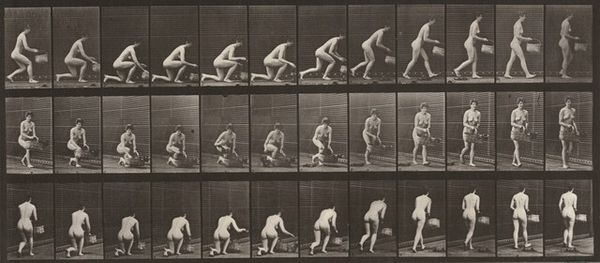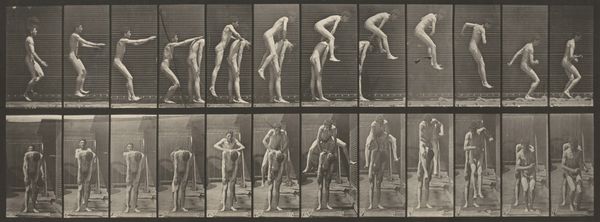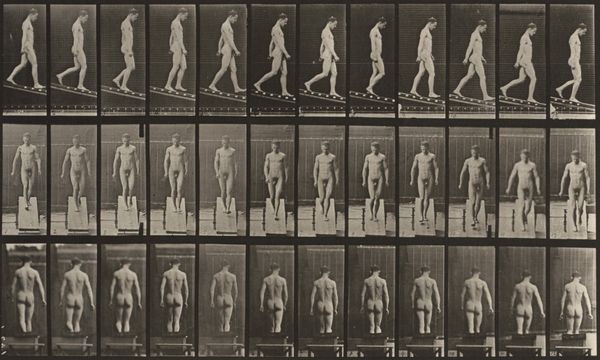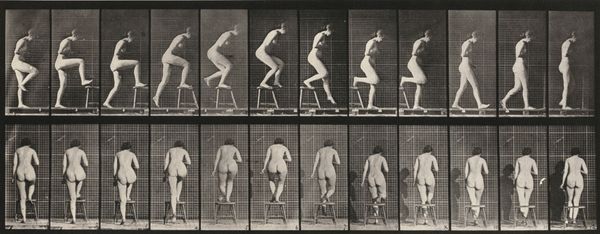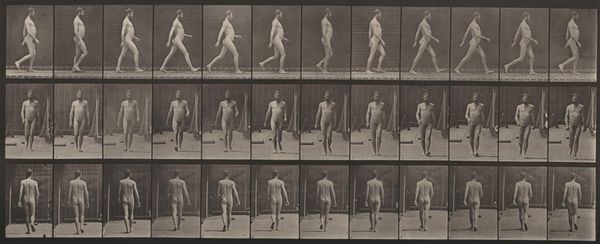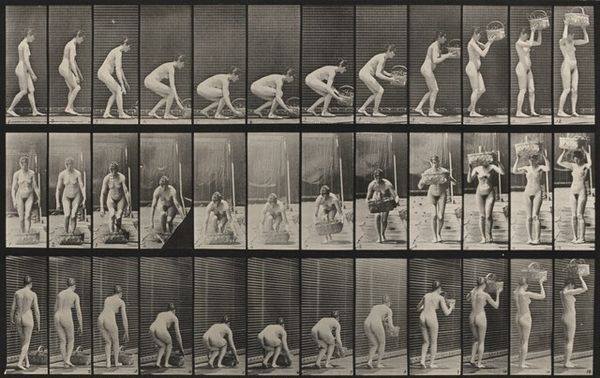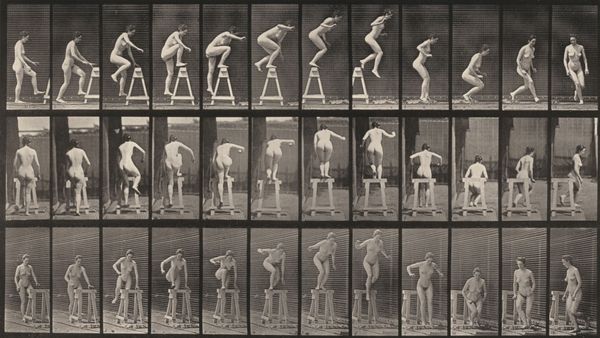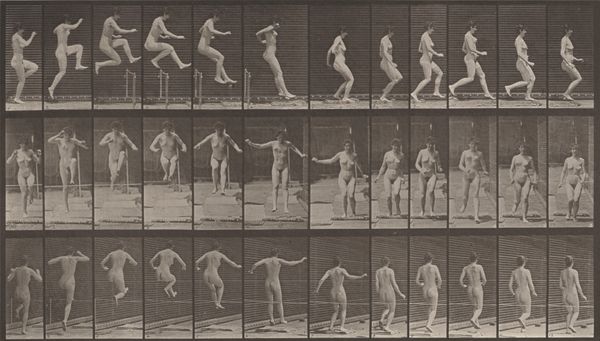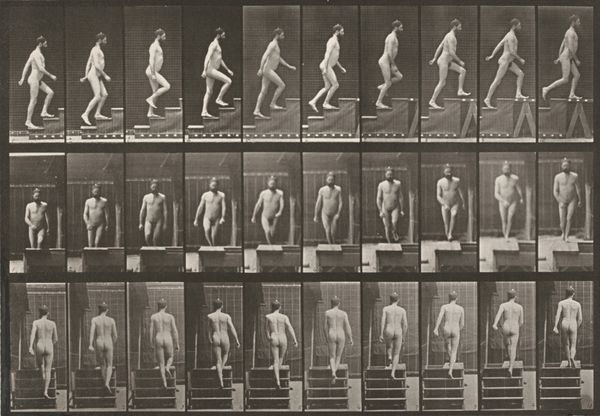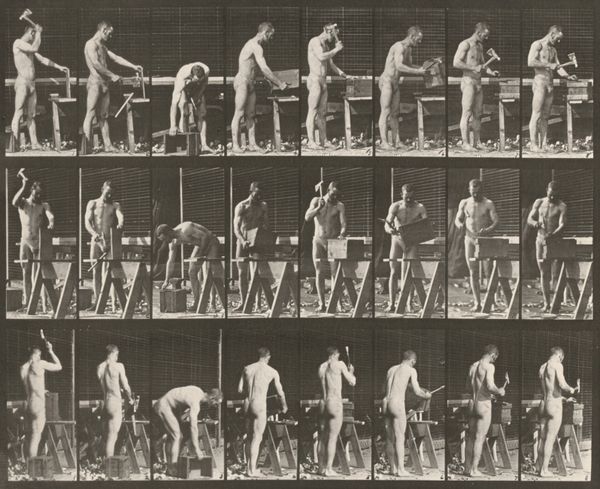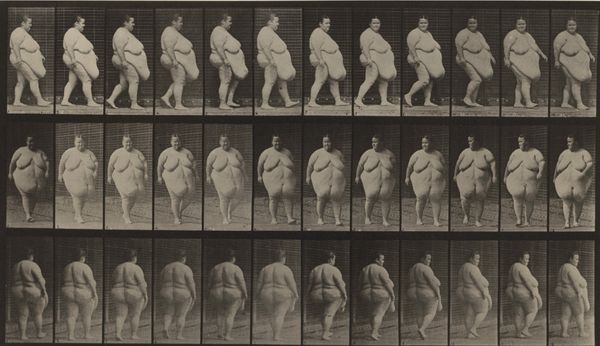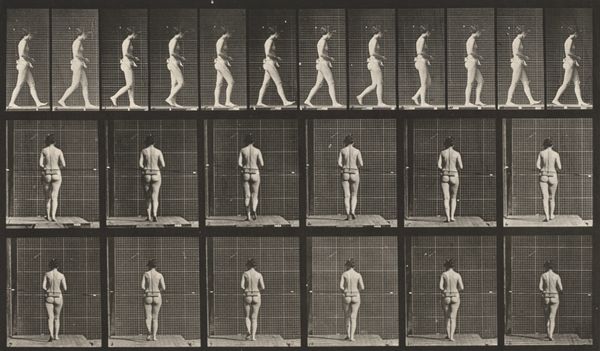
Plate Number 223. Stooping, lifting a basin, wiping it and turning 1887
0:00
0:00
print, photography, gelatin-silver-print
#
action-painting
# print
#
photography
#
gelatin-silver-print
#
history-painting
#
nude
Dimensions: image: 24.2 × 31.3 cm (9 1/2 × 12 5/16 in.) sheet: 48.4 × 61.3 cm (19 1/16 × 24 1/8 in.)
Copyright: National Gallery of Art: CC0 1.0
Curator: This gelatin silver print from 1887, titled "Plate Number 223. Stooping, lifting a basin, wiping it and turning," is part of Eadweard Muybridge’s groundbreaking series on human locomotion. Editor: The sequence almost has the feel of a comic strip, broken up into its distinct frames—it’s very graceful despite being so clinical. The subtle grayscale really brings out the musculature, it feels timeless and modern, though. Curator: Absolutely, and consider Muybridge’s process. Each image requires meticulously timed multiple cameras to capture these successive moments. What elevates it beyond mere scientific study is the aesthetic choice in presentation and composition. Look at how each frame echoes others in the panel and also, its social dimensions. The work comes about at a time where there is mass interest in Taylorism, movement study, and improvements to workplace efficiencies via observations like Muybridge's. Editor: Yes! It really does feel like work; stooping and lifting is not necessarily an inherently graceful motion. What’s especially intriguing, though, is the vulnerability in the presentation of this anonymous, naked female figure engaged in such a repetitive act of domesticity, whatever function that basin actually held at that time and context. Curator: The implied narrative of labour is fascinating given Muybridge’s wider motivations in charting physical movement as data, but it goes beyond functionality. There's that push-pull between ‘art’ and ‘craft,’ or the high and low…The commodification of photography and the beginnings of visual technologies. Editor: I wonder, too, about how this piece has transformed over time in meaning; seeing it now feels especially provocative given our awareness of the historic dynamics between male artists and female models. Curator: That’s important: Muybridge himself held very specific cultural, technological and personal relationships that are material in understanding the ultimate production and consumption of the final print as you say, these power structures have new and vital connotations. Editor: It also invites us to reflect upon the act of seeing, to decompose how the human eye understands physical movement, and really gives substance to that well worn cliche: that art has to be seen to be believed. Curator: It’s quite something to view how process is completely embedded within what becomes art. A beautiful blend.
Comments
No comments
Be the first to comment and join the conversation on the ultimate creative platform.

